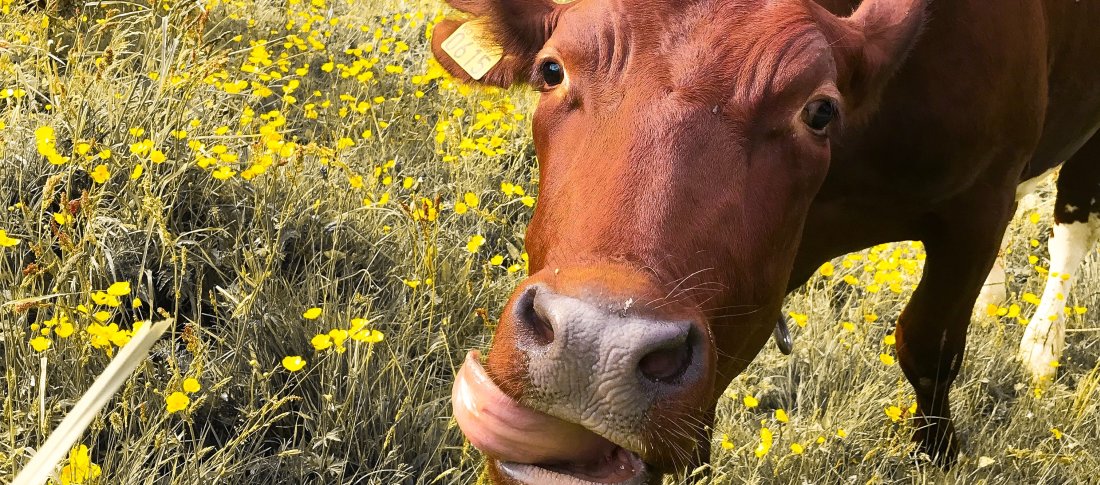Megalac and dairy cow nutrition go together like JCB and diggers… Massey Ferguson and tractors… New Holland and combine harvesters (other brands are available!)… But the fact is, there’s a lot more to feed efficiency than simply what is fed.
Secondary influences such as environmental factors and husbandry practices can play a huge part in how your cow utilises her feed. And whether bought-in or homegrown, all feed comes at a cost.
Balancing profitability and productivity is a juggling act that all dairy farmers have to undertake. So here are a few ways in which you can help maximise the potential of your herd.
Healthy housing for a happy herd
A healthy housing set-up is fundamental to a healthy, happy herd and two key areas to pay close attention to are ventilation and cleanliness
Making the difference between draughty and airy, damp and dry, ventilation is right up there with the most important factors to consider when housing your herd. Lack of airflow can cause the air in your cowshed to stagnate, resulting in an increased pathogen load. This opens up your herd to all sorts of disease challenges which can compromise how they utilise their feed. Furthermore, in warm weather, poor ventilation can lead to heat stress, and in cold weather, chills and respiratory compromise can result.
It’s therefore vital to create uniform air inlets and outlets throughout the building in order to prevent the occurrence of draughts and to promote the stack effect – where warm air rises (and ideally escapes through ridge outlets) and draws fresh air into the building through inlets at a lower level. By utilising natural ventilation techniques such as this, the humidity within your barn should be lower, temperature more ambient, and dampness reduced.
Managing airflow and reducing draughts at cow height is an easy way to help your herd regulate their body temperature and partition their nutrition into body condition and milk production rather than staying warm.
The cleanliness of your cowshed is also fundamental in disease and parasite control. Giving your cow housing a thorough cleaning before housing your herd is a great way to minimise any nasties lurking on surfaces around the barn. Regularly adding clean bedding during housing helps to suppress the ideal conditions for pathogens to thrive and also encourages cows to lie down and form a great layer of insulation. A drainage slope, set at a 5-degree angle throughout the cowshed, is a longer-term investment but pays dividends in keeping bedding dry and insulated. Taking steps such as these mean that feed can be utilised for productivity rather than fighting the cold and, worse still, infection.
Plan for the herd pecking order
Every herd has its dominant members – those that move other herd members around and always ensure they are first to the feed and fresh water. So it’s important to ensure you provide adequate space for your whole herd to feed, rehydrate and move around without conflict.
Some tips:
- Allow 1 metre of water space per 10 cows.
- Eliminate dead ends and tight corners to prevent cows from getting cornered.
- Provide enough space for all cows to feed at the same time. 60-75cm per cow is recommended.
A closer look at lameness
I’m sure we can all relate to the increased energy that is required to hobble around on one and a half feet all day while nursing a sprained ankle… or worse.
A lame cow is not a happy cow, and not only will her discomfort impact negatively on her food intake, but nutrition will be partitioned to healing and pain management, leading to her body condition being compromised. Addressing any lameness within your herd is vital to maximise feed efficiency.
Steps you can take include:
- Treating any lameness – seek veterinary intervention if necessary.
- Maintain deep, dry bedding within housing at all times to reduce the creation of ideal conditions for pathogens to thrive.
- Keep any lame cows at close quarters to reduce the movement required of them and time spent on their feet.
- Bring lame cows in at the end of milking to reduce waiting times.
Like what you've read?
For all of our latest dairy farming tips, advice and insights, be sure to keep up-to-date with our regularly updated blog.
If you have any questions or comments on any of our advice shared in this blog, remember you can reach out to us on Twitter and Facebook.
